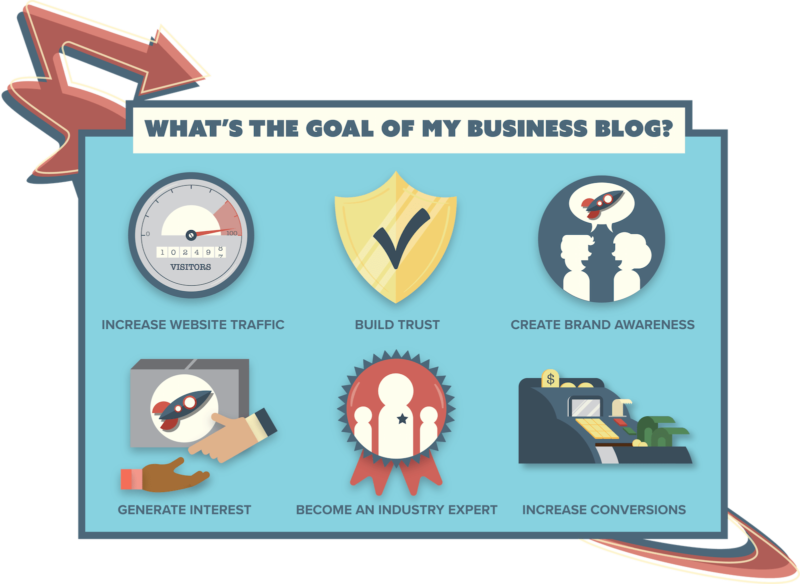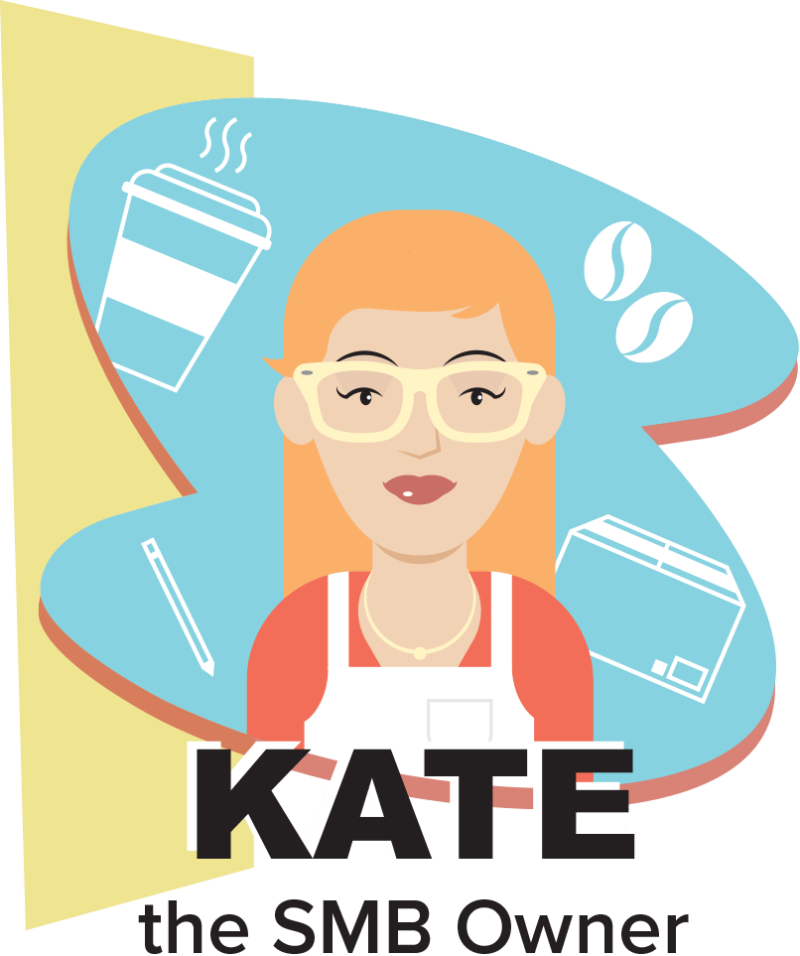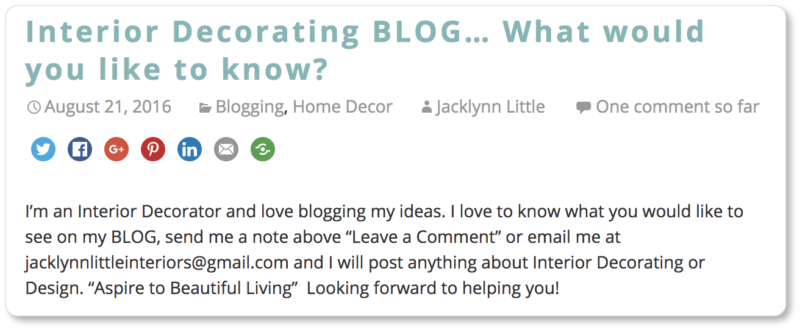- HOME
- Website Building
- Business Blogs
- Determining Your Blog's Ideal Reader
Determining Your Blog's Ideal Reader
- 9 Mins Read
- Posted on April 19, 2018
- Last Updated on October 8, 2024
- By Lauren
If your business is hosting a website, your goal is most likely to have that site seen by the highest number of prospects possible. Inpart, this is where search engine optimization (SEO) comes in. Great SEO will ultimately propel your site to the top of the search engine results, which will in turn result in higher traffic… and, thus, more conversions.
And yet, it’s possible (and, in fact, it’s sometimes too easy) to over-optimize: stuffing your pages with as many keywords as possible in an attempt to move your site unorganically up the search engine rankings. This strategy ultimately runs two risks. In the first place, you run the risk of Google identifying your page as spam and sending it to the bottom of the results… which means your keyword-happy inclinations will have been counter-productive. In the second place, you run the risk of your copy being incoherent or uninteresting to your readers.
This is why SEO is an important—but secondary—concern. You must prioritize consistent, quality content that will educate and benefit your readers, adding value to their lives. While a high ranking might get you page views, visitors won’t be willing to stay more than a few seconds once they discover that your page doesn’t actually have much to offer them. A longer average “time on site” means higher rankings. And you’ll only be given that time if your content is worth it.

This is why we discuss your blog’s relationship with its audience first, and leave the SEO strategies for the next section. Ultimately, if you’re writing high-quality content (and implementing our strategies below), the SEO will handle itself.
Figure out why you’re writing… and to whom
In our introduction to the company blog, we defined content marketing as “an approach to marketing that involves the creation and distribution of valuable material, none of which explicitly promotes the product or service, but rather stimulates interest in the brand.” And remember: In content marketing, unlike in traditional marketing, the target audience whose interest you’re seeking to “stimulate” actively discovers you.
So you have to have a sense of the person you’re waiting to be found by, since that’s the person (or persona) you’re writing for.
To give yourself a clearer vision of this persona, here are the two essential questions you must be able to answer:
What’s the goal of my blog?
Most business bloggers would pick some combination of the following goals to explain why they keep a blog:

Determining which of these goals you prioritize will allow you to make subtle decisions as you strategize on individual blog posts. For example, if your goal is to establish expertise, you’ll respond to current events in your industry. If your goal is to emphasize the benefits of your products, you’ll focus on prospect pain points. If your goal is to increase conversions, you’ll emphasize calls-to-action in your copy and layout. And so on.
Once you have an idea of what you’re trying to accomplish, you can move on to questions of execution: What will your blog offer? How will your content gratify the needs of your readers? It may help to write your answer out and keep it somewhere above your desk: “My blog’s objective is to offer actionable advice on landing pages for SMB websites to help my readers get traffic and turn that traffic into leads.”
The blogs for the companies 5 Minute Bookkeeping and SquareFoot display their goals (or some version of them) as headlines on their blogs’ homepages. The headlines then function as promises to their readers:


Keeping your objective in mind will help guide you each time you sit down to write new content for your blog. What’s more, placing it above the fold on your blog’s homepage will let your visitors quickly determine whether or not they’re in the right place.
Who is the audience for my blog?
Notice how, in the objective above (“to offer actionable advice on landing pages for SMB websites to help my readers get traffic and turn that traffic into leads”), we clarified who the intended audience of our hypothetical blog is: SMB website owners.
This is key. You need to know who your blog is for… because you’ll be addressing every blog post to that persona.
Hopefully you already have a buyer persona (or multiple personas) for your product or service, which will include both demographic details (age, education, income, ethnicity, gender) and psychographic details (values, attitudes, personality, opinions, and beliefs). This is, in short, a character sketch of your ideal customer.
These personas exist to help you hone and refine your marketing strategy. You want to understand what will push your readers’ buttons at both the intellectual and emotional levels.
In other words, you want to identify these things so that you can accurately address your readers’ needs, pain points, values, and desires. Because you’re writing for them, not for yourself.
Take, for example, the content you’re reading right now. This isn’t a blog post, but it is content marketing; and the idea of reader personas applies just as well.
The Reader Persona for The Roadmap to Your Best Business Website
When we sat down to create this content, we knew we wanted to deliver significant value to our readers by solving a business problem that crossed a range of industries. A comprehensive guide for how to create quality web content seemed like a good place to start. But the topic wasn’t the only thing we needed to figure out… we also needed to pin down who our audience was. Not only would that help us when it came time to promote it; but during the composition phase, having clear reader personas would help us determine the shape and tone of the content. Here’s what we came up with:
Persona #1

Kate runs a small business that’s been operating profitably for a couple years, but now she’s looking to update her web presence to convert more visitors into customers for her online retail operations. She knows her industry inside and out, but she doesn’t have a marketing background, so she needs some guidance on content.
Kate loves her work, but she’s always busy putting out fires. She’s the engine of her business; so her time is very valuable. She’s practical, industrious and ambitious. She tends to consume articles online when she has a problem and she needs an answer quickly. Her relationship with The Roadmap to Your Best Business Website is this: She’ll read the chapters on the areas of her website she needs to improve, but she won’t spend a lot of time exploring. After all, she’s got a business to run!
How we catered to Kate’s needs:
- Avoided corporate/marketing jargon
- Defined key terms and offered “Pro tips”
- Created shorter “Best of” posts for faster reading
Persona #2

Alex is a marketer at a medium-sized company. He’s the best writer in the office, and consequently a lot of the messaging falls to him. He has five years of experience; but this is a lot of responsibility, so he’s always looking to improve. It’s important for him to show his value so he can grow in his career. Value is demonstrated through measurable results, and he needs ideas for ways to improve what his team is doing.
He’s looking for best practices to help him refine his skills. He wants to experiment and iterate to find the most effective approach. When he does online research, he tends to consume content more slowly, bookmarking it and returning when he has time for self-learning. He’s in it for the long haul, and he wants to keep his finger on the pulse of the industry.
How we catered to Alex’s needs:
- Offered comprehensive content with an abundance of best practices
- Provided numerous links to great resources across the web
- Included screenshots of real-life examples with accompanying critiques
Persona #3
 Janelle recently founded her dream startup, and she wants to make sure her company launches with the right messaging and web strategy. She comes from a business background, so she knows how to talk about her product with investors; but she doesn’t necessarily have any experience with content creation. The problem is, she needs to sign off on the new website and the other work being done by her team. She’s a visionary and a bit of a philosopher, so she wants to equip herself with enough understanding to start making smart decisions. Because, in the end, that’s her job: decision-maker.
Janelle recently founded her dream startup, and she wants to make sure her company launches with the right messaging and web strategy. She comes from a business background, so she knows how to talk about her product with investors; but she doesn’t necessarily have any experience with content creation. The problem is, she needs to sign off on the new website and the other work being done by her team. She’s a visionary and a bit of a philosopher, so she wants to equip herself with enough understanding to start making smart decisions. Because, in the end, that’s her job: decision-maker.
Ultimately, Janelle wants a broad understanding of what’s possible. She’s an autodidact at heart, so she respects and appreciates thoughtful, long-form content. She’s willing to read long pieces in a single sitting. But be careful… If she starts to doubt your credibility, she’ll close the tab and never think of your content again. She doesn’t suffer fools lightly.
How we catered to Janelle’s needs:
- Included in-depth discussions of the thinking behind content
- Supported claims with statistical evidence
- Provided links to SaaS tools that can be implemented in her company
Don’t see yourself reflected in this list? Tell us who your reader persona is and we’ll create more content that speaks to your needs!
Keeping your audience in mind will keep you from blabbing on about current trends in your industry that don’t have anything to do with your prospects’ needs. It will prevent you from talking about yourself or your company, or from using complex industry jargon, or from writing content that seems “too introductory” to you, but in fact would be the most useful thing you could offer your prospects.
Instead, you’ll focus on educating your buyer persona and engaging with them in a way that moves them down the sales funnel. You’ll focus on writing about what your audience wants to read: content that is interesting, solves their problems, and adds value to their lives. You’ll focus more on your prospects than on your product or service… but in educating them and addressing their pain points, you’ll help them discover that what you have to offer is, indeed, the solution they need.
The buyer’s journey
The blog at An Organised Life is absolutely clear about who its audience is: women at the Millennial/Generation X threshold whose lifestyle concerns include fashion and travel. The Organised Life store sells notebooks, pens, planners, and calendars; and given the products it offers, it could have imagined anynumber of customer personas for itself. But the blog is tailored to a specific demographic—and it’s likely they see more conversions because of their specificity:

Keep in mind that visitors to your blog may be at different points in the buyer’s journey (awareness, consideration, decision). If your blog addresses an audience that spans these stages, you’ll want to vary your content between posts to ensure that each of your visitors feels seen and spoken to—no matter where they are in the journey.
For example, you’ll note that one of the nine posts we’ve shown from An Organised Life—”Get Organised and Pre Order Your 2018 Favourites” (the post on the top left)—is a stronger product sell than the other eight. This post is geared more toward prospects in the “decision” stage than the others are.
Refining your content
As your blog gets going, you may even consider asking your readers what they want in order to help you fully flesh out your persona/s. No matter how attentively you work toward imagining your audience, you’re likely to have a few wrong assumptions in there—not to mention that it’s sometimes easy to forget your audience altogether and move toward the information you think is most interesting.
The best way to make sure your blog evolves along with your readership is to conduct a brief survey of your loyal readers. What questions or topics should your future content address? What do your readers want more (or less) of? What type of content do they prefer (text, video, audio, infographics, etc)? And so on.
Jacklynn Little Interiors asks this on their blog:

Once you have a firm grasp on whom you’re writing to and why, you’ll have a much better sense of the keywords you’ll use in your blog content to optimize it for search engines. You’ll be better able to imagine the language your ideal prospects would type into Google to discover your blog through organic search. And—as we discuss in the following section—you’ll start tailoring the language of your content for precisely this discovery.
In the next section, we discuss fundamental SEO principles worth taking into consideration as you write each blog post: Indeed, these are things you should plan out before you even begin your blog. Learn how to determine your keywords and where to place them; how to use links as part of your SEO strategy; the importance of long-tail keywords; and the importance of keeping your blog and your business website on the same domain.